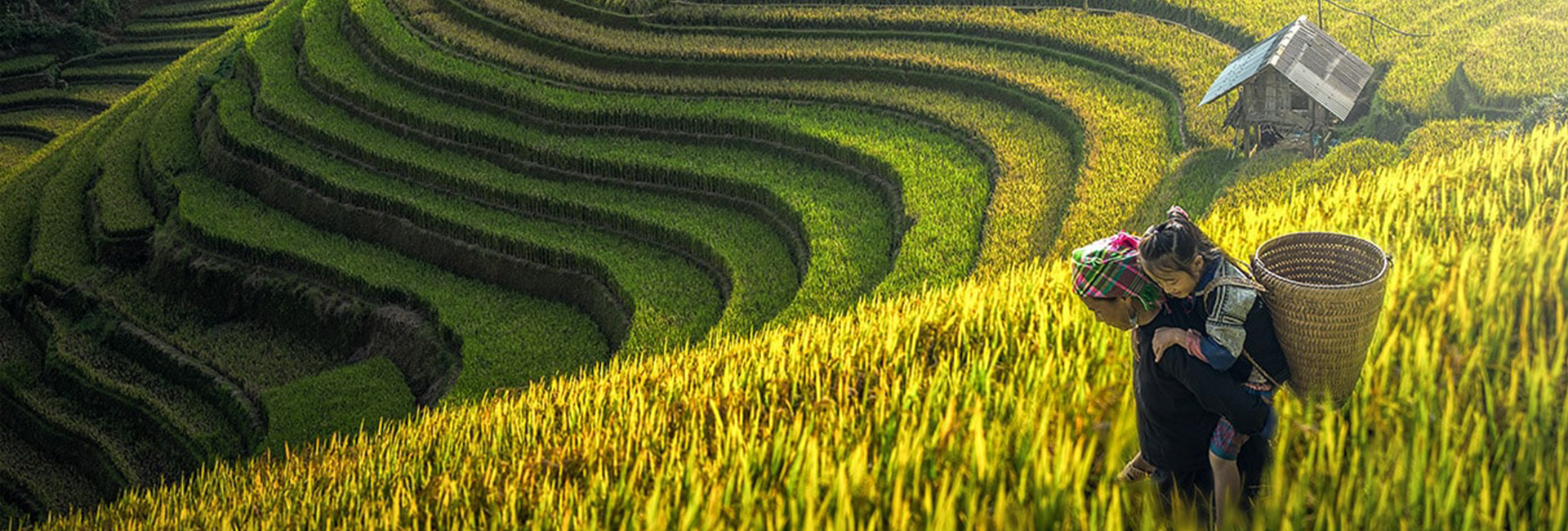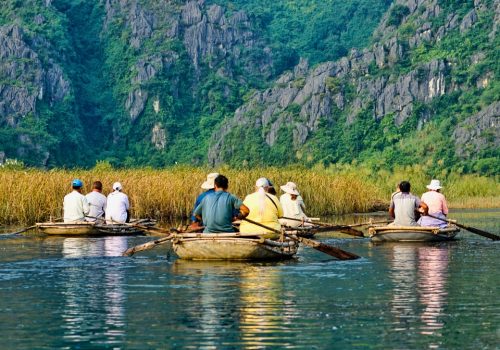Located in the northwest region of Vietnam, approximately 320 kilometers northwest of Hanoi, Sapa is a picturesque town renowned for its breathtaking landscapes, vibrant ethnic cultures, and thrilling outdoor adventures. If you’re planning a trip to Sapa, this is a must-read travel guide from top 15 things to do in Sapa Vietnam to complete travel tips.
Top 15 Things to Do in Sapa Vietnam
1. Living like a local by overnight at ethnic minorities’s homestay
One of the most fascinating experiences when exploring Sapa is strolling around the rustic landscape and sleeping overnight at a homestay for ethnic minorities. You can experience on your own their traditional way of life, enjoy authentic home-cooked meals, and participate in cultural activities. It’s a fantastic opportunity to connect with the locals and gain a deeper understanding of their customs and traditions.
You can stroll around on your own and find a warm local homestay in the area. It will be an exciting challenge but also quite difficult because you may be lost and can’t find a real local house. A recommendation is that you should discuss your requirements with a tour company or local travel experts; they’ll help you best!
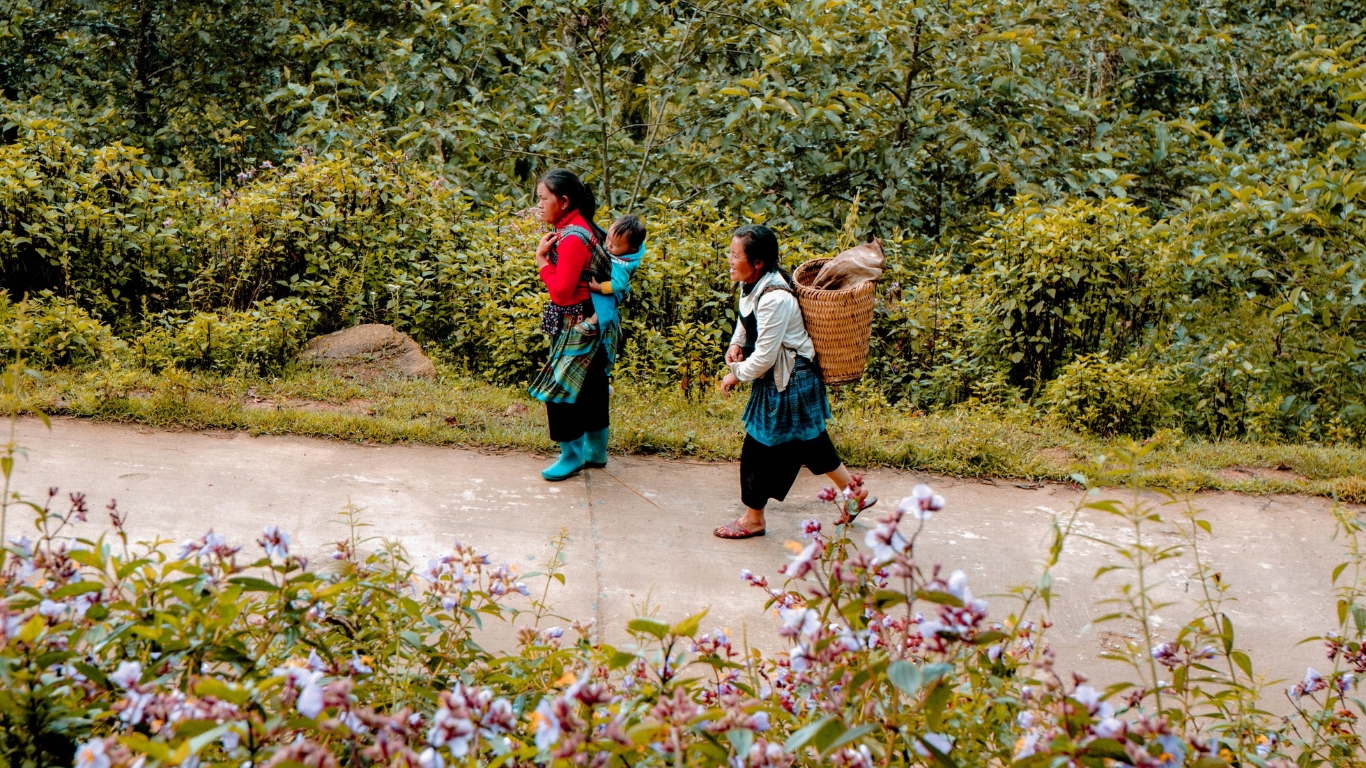
2. Non-touristy experience at hidden gems villages
Sapa is one of the lands of ethnic minorities in Vietnam. Therefore, escaping the crowds and exploring the hidden gem villages around Sapa is one of the best things you can’t ignore when coming here. You can come to visit each of the villages or enjoy the trekking tour to visit multiple villages in various fascinating routes.
Ban Ho, Ta Van, and Ta Phin are just a few examples of these picturesque villages where you can witness the untouched beauty of the region. Interact with the friendly locals, learn about their daily lives, and admire the breathtaking landscapes.
FYI: A little notice that you may have heard about the popular Cat Cat Village. But until now, this village no longer retains its original wildness, and it could be a tourist trap for your journey because of its commercialization. But this is still a good place to buy some souvenirs. (But be careful with the overcharge.)
3. Drink hot coffee in the clouds
Relax and savor a hot cup of coffee while enjoying the mesmerizing views of Sapa’s cloud-covered mountains. When hiking or before enjoying the trekking tour out of Sapa town, don’t miss several cafes and restaurants offer stunning panoramic vistas, creating the perfect backdrop for a memorable coffee break.
4. Discovery of Traditional handicrafts with H’mong Sewing Class
The H’mong Sewing Class in Sapa offers a unique opportunity to immerse yourself in the traditional handicrafts of the region. The Hmong people, an ethnic minority group in Vietnam, are known for their intricate embroidery and sewing skills, which have been passed down through generations.
During the sewing class, you’ll have the chance to learn about the H’mong sewing techniques and the cultural significance behind their traditional designs. Experienced H’mong artisans will guide you through the process, teaching you how to create beautiful embroidery patterns using colorful threads and delicate needlework.
At the end of the class, you’ll have a beautiful handmade souvenir to take home, representing your personal connection to the rich cultural traditions of Sapa. It’s a meaningful memento that serves as a reminder of your experience and the craftsmanship of the H’mong people.
5. Explore Legend Dairy at Silver Waterfall and Love Waterfall
Silver Waterfall and Love Waterfall in Sapa are two captivating natural attractions that offer breathtaking beauty and a peaceful escape. Silver Waterfall cascades down rugged cliffs from Fansipan Mountain, while Love Waterfall exudes a romantic ambiance.
While exploring these two of the most wonderful waterfalls in Sapa, you will learn about the romantic love story is known as a legendary of these waterfalls. Don’t miss this opportunity!
- Price for Silver Waterfall visit: ~US $1
- Price for the Love Story Waterfall visit: ~US $3
6. Enjoy a peaceful moment on Sapa Lake by boating
Neảby Sapa town is the rural Sapa Lake. Take a boat ride on Sapa Lake and immerse yourself in the serenity of the surroundings. Admire the reflections of the mountains on the calm water and enjoy the peaceful atmosphere. It’s a great way to relax and appreciate the beauty of Sapa from a different perspective.
7. Blend in the vibrant culture of locals at Bac Ha Fair (Bac Ha Market)
Bac Ha Fair, also known as Bac Ha Market, is where ethnic minority communities gather to trade and socialize. This fair only has one every Sunday, it is also the weekend hence attractive to many people from locals to tourists come to this vibrant market.
If visit Sapa and right on time have Bac Ha Market, you’ll experience the colorful atmosphere, browse through a wide array of traditional handicrafts, and indulge in delicious local cuisine. Especially, don’t forget to try some corn wine of the Northwest ethnic people. This is a true treasure for alcoholics when coming to Sapa. Visiting Bac Ha Fair is not just about shopping and sightseeing; it’s about immersing yourself in the vibrant tapestry of local life and celebrating the spirit of community. It’s a cultural feast for the senses.
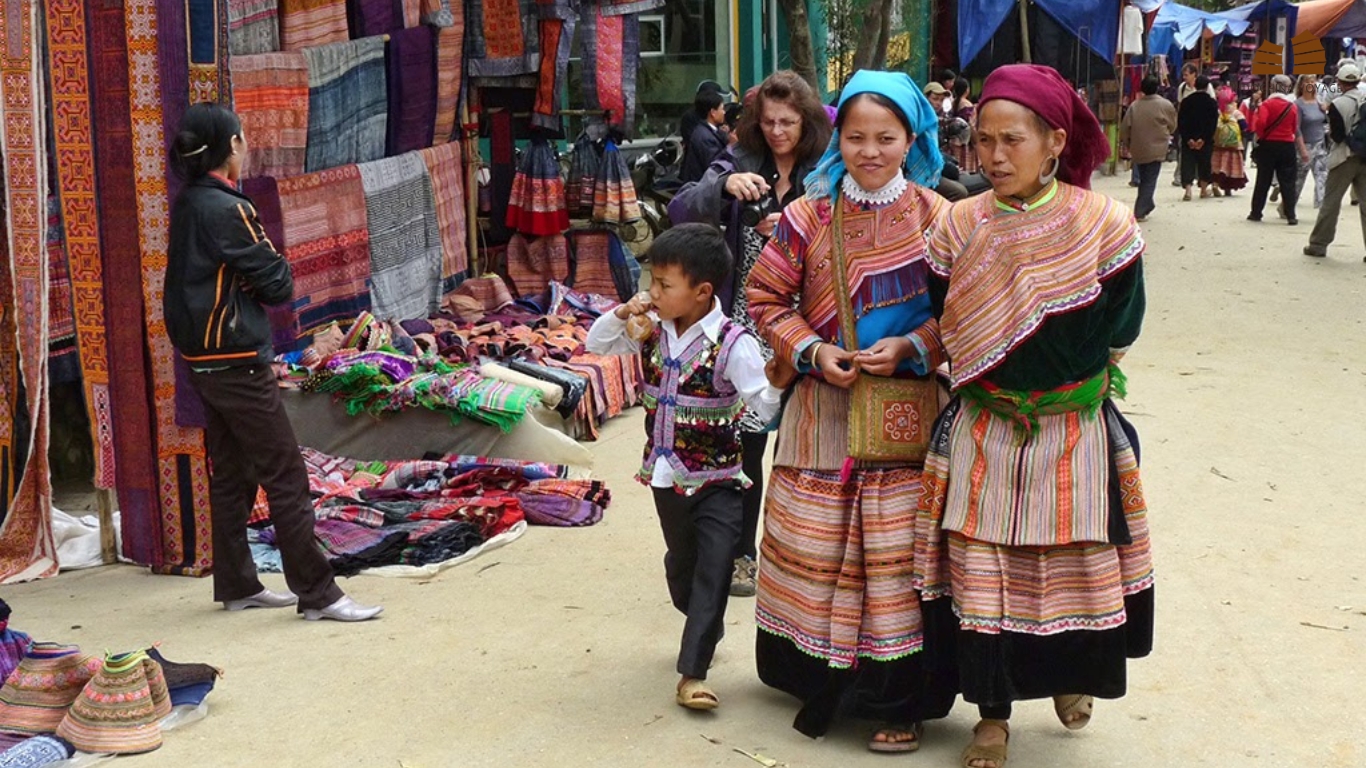
8. Lost in Muong Hoa Valley
Muong Hoa Valley is famous for its terraced rice fields and ethnic minority villages. This place is likened to the paradise of the Northwest. Enjoy the breathtaking scenery, encounter friendly locals, and learn about their agricultural practices. The valley offers fantastic hiking opportunities for nature enthusiasts.
9. Conquer O Quy Ho Peak
O Quy Ho Peak is one of the Four Great Passes of the Northwest mountains and forests. Located at an altitude of 200m above sea level, with dangerous curves, 50km in length, and clouds covering the top of the pass all year round, this pass has made other famous passes in mountain North Vietnam such as Ma Pi Leng ( 20km), Pha Din (32km long) or Khau Pha (40km) become small.
The exhilarating journey rewards you with panoramic views of the surrounding mountains and valleys. It’s a must-do for adventure seekers and offers a thrilling sense of accomplishment.
Tips: You should visit O Quy Ho Peak in the morning instead of the afternoon to avoid the sun
10. Try Corn Wine and many other local wines
One of the specialty drinks in Sapa is Corn Wine. This wine is made from corn by local communities which offers a taste of the region’s traditional flavors. If visit a homestay of locals and they invite you to try their corn wine (or any other homemade wine), that means they really love you very much. In Vietnamese culture, a shot of wine is a symbol of hospitality.
FYI: Here are some homemade wines in Sapa for you to try:
- Sapa Wine: Made from locally grown fruits like plums and apples, Sapa wine offers a distinct taste that reflects the region’s terroir.
- Rice Wine: A popular choice in Vietnam, rice wine is made from fermented glutinous rice. It comes in various flavors and strengths.
- Fruit Wines: Sapa also produces fruit-based wines using fruits such as plums, apricots, and strawberries, offering a fruity and refreshing taste.
- Herbal Wines: Some local producers in Sapa create wines infused with medicinal herbs, combining unique flavors with potential health benefits.
11. Taste Horse Hot Pot
The Horse Hot Pot is a communal dish that is typically enjoyed in a group setting, making it a social and interactive dining experience. It is believed to have originated from the ethnic minority communities in the area, particularly the H’mong and Dao people, who have a long-standing tradition of horse rearing.
The dish consists of tender horse meat cooked in a hot pot, which is a simmering broth placed in the center of the table. The hot pot is filled with a flavorful broth made from various herbs, spices, and aromatic vegetables. It is often infused with local ingredients like lemongrass, ginger, garlic, and chili, giving it a delightful and aromatic taste. For adventurous food enthusiasts, trying Horse Hot Pot in Sapa can be an opportunity to step out of your comfort zone and explore the local flavors and traditions.
12. Trekking through off-the-beaten-path Sapa Routes
Trekking through Off-the-Beaten-Path Sapa Routes is one of the most fascinating things to do in Sapa Vietnam that you can’t miss. Step out of the vibrant town and hop on a journey to discover hidden waterfalls, encounter diverse wildlife, and witness the untouched beauty of the region. These treks offer an immersive experience in nature and a chance to escape the crowds. A recommend is you should find a local Black H’mong tour guide and let them lead you to explore the hidden gems of Sapa.
Some of Hidden Sapa Routes for your reference:
- Y Linh Ho Village – Lao Chai – Ta Van Village
- Ma Tra Village – Ta Phin Village
- Lao Chai – Ta Van – Seo Mi Ty

13. Hop on a Cable car to Fansipan – Roof of Indochina
The cable car ride to Fansipan, also known as the “Roof of Indochina,” is a thrilling and awe-inspiring experience that offers breathtaking views of the surrounding landscapes in Sapa, Vietnam. It is considered one of the most remarkable cable car journeys in the world, providing access to the highest peak in Indochina.
The cable car system to Fansipan was built to make the once-challenging trek to the summit more accessible to visitors of all ages and fitness levels. The cable car cabins are designed to provide comfort and safety, offering large windows that allow for unobstructed views. As you ascend, you’ll witness the landscape unfolding beneath you, revealing the sheer magnitude and beauty of the Sapa region.
In addition to the cable car ride and the stunning views, the summit of Fansipan offers other attractions and facilities. You can explore the various walking trails, visit the temple dedicated to Tran Hung Dao (a Vietnamese hero), or enjoy a meal at the mountaintop restaurant while soaking in the breathtaking scenery.
14. Admire the golden rice fields
Sapa is renowned for its terraced rice fields, which are not only a source of livelihood for the local ethnic communities but also a stunning sight that attracts visitors from around the world. In addition to the visual spectacle, the golden rice fields also offer a sensory experience. The air is filled with the earthy scent of the fields, and the gentle rustling of the rice plants adds a soothing soundtrack to your journey. The cool breeze and the tranquil ambiance of the countryside create a sense of peace and serenity.
For the best view of the harvest season, you should visit before September every year. Because in Sa Pa there is only one rice crop a year and it will be harvested in August and September.

15. Enjoy Grilled Skews at Sapa Night Market
Last but not least, don’t forget to indulge in the vibrant atmosphere of Sapa Night Market and treat yourself to delicious grilled skewers. At the market, you’ll find a wide variety of skewers on offer, ranging from succulent meats to flavorful vegetables. Grilled skewers are typically prepared right in front of you, ensuring that you can witness the cooking process and enjoy the freshness of the ingredients.
The smoky flavors, combined with a range of dipping sauces, create a delightful feast for your taste buds.
When is the ideal time to visit?
The appropriate time to travel to Sapa is from August to October or from March to May. At this time, Sapa weather is stable with sunny days and cold nights. For the best terrace fields landscape, you should visit in the middle to the end of August as many fields have been harvested in early September. December to February is very cold might appear ice and occasionally snow. This is also the bloom season of peach blossoms, azaleas, etc.
However, Sapa is cool all year round with unique indigenous imprints. Hence this vibrant place is a year-round destination, and each season has its own charm.
>>> Read more: Sapa weather & highlights by season
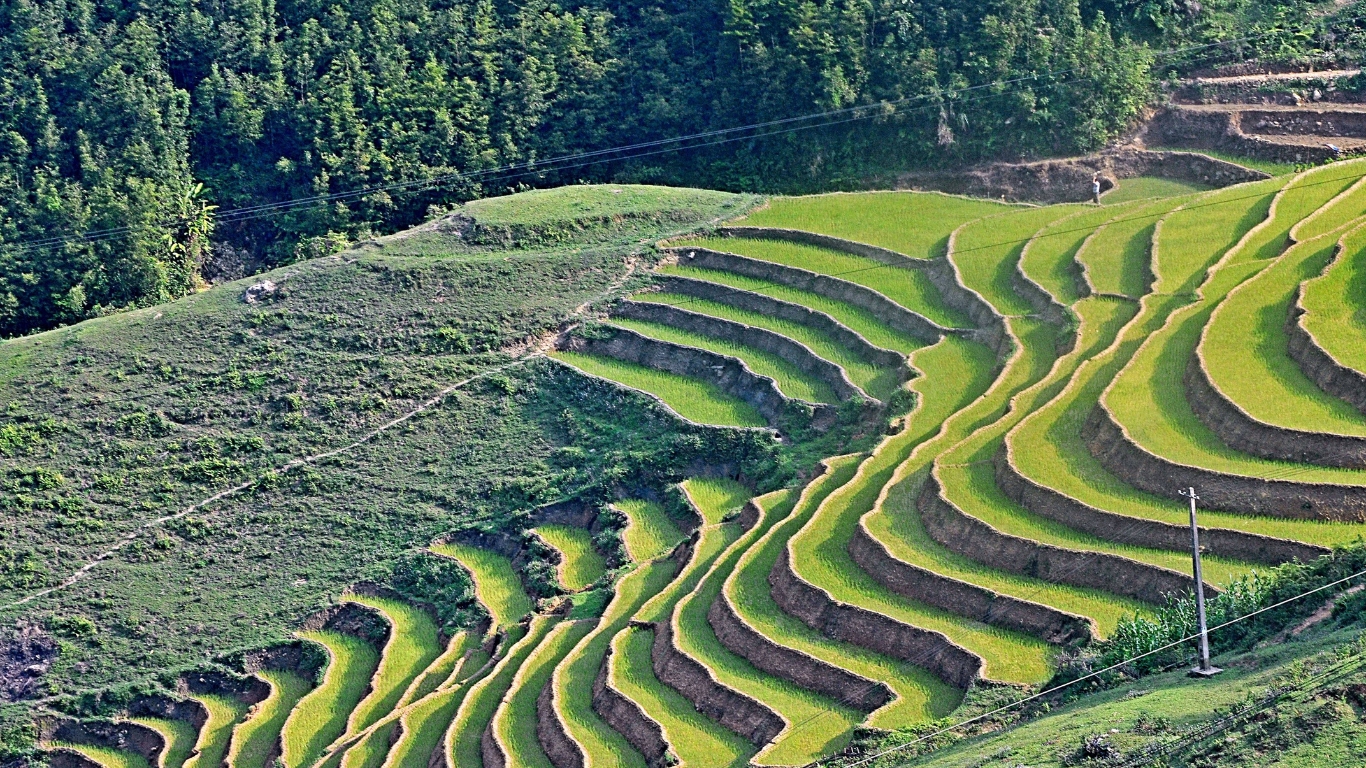
How to get from Hanoi to Sapa?
Sapa town is 376km from Hanoi, therefore, the best way to get from Hanoi to Sapa is by traveling by coach or trains.
Hanoi to Sapa by coach
- Price: ranges from 230,000VND – 280,000VND per person per way.
- Time: 8 – 9 hours
Traveling by coach has the advantage of saving time, however, in the rainy season, it seems to be difficult to travel as many bumpy passes from Lao Cai to Sapa. Tourists can contact some garages like Sapa Express, Queen Café, Sao Viet, etc.
Nowadays, traveling by bus to Sapa is not too difficult and tiring. You’ll have a private cabin with a seat which is designed as a bed to lie on and sleep. It is really comfortable.
Hanoi to Sapa by train
- Price: about 150,000VND per person to 3,200,000VND per person
- Time: 7 – 8 hours
The train has many types for tourists to choose from such as soft chairs, hard chairs, or air-conditioned beds. The train runs at 9 am or 10 pm in Hanoi and gets to Sapa the next morning. For the seat, there are 2 types of hard seats of about 150,000VND per person, and soft seats of about 280,000VND per person. For bed type, the bed of 6 people costs about 480,000VND per person; the bed of 4 people costs about 560,000VND per person; 2 beds of senior people cost about 3,200,000VND per person.
You’ll sleep overnight in the private cabin (if choosing an overnight sleep train) and arrive at Lao Cai Station the next morning. From there, you’ll take a taxi, bus, or private drive to reach Sapa Town, which is around 38 kilometers away.
Moreover, it is important not to bring expensive belongings or keep them carefully when taking the train. Be careful with the pickpockets.
Hanoi to Sapa by private car
Traveling to Sapa by private car is considered the best option thanks to the new highway from Hanoi to Sapa. It takes you only about 4 hours instead of 8. Moreover, you can have chances to stop for the photoshoot and be more flexible to get around Sapa town and villages. With this option, travel consultants from Vietnam tour companies are willing to help. Just give them an inquiry, and then everything will be ready for hassle-free Sapa tours.
Must-read travel tips
- In local markets, especially in the night market in Sapa town, the possibility of being overcharged on prices will be very high, so ask the price and try to bargain for the items before buying as well as when eating skewered grilled food here.
- Street food is very common in Sapa but the way people prepare it will surprise you. It is recommended that you bring medicine to protect your health when trying street food here.
- Most of the mountain people here are ethnic minorities, so their lives can be simple and a bit wild, so don’t be too surprised when you see they may kill some animal like a chicken on the street here.
- Pleading is a big problem in Sapa, you may be chased down by locals and forcefully made to buy their mass-produced goods when they loiter around in the streets, in front of cafes. Especially little children under 4-5year old, forced to sell & dress up and take photos with tourists
- To make the most of your time in Sapa and explore its hidden gems, consider hiring a local guide.
- In Sapa town or Cat Cat village, you may see that is quite touristy and could be a tourist trap, but step out off the beaten path side with hidden villages such as Ta Van, Ta Phin, etc, you will admire all the real charms of Sapa.
- Carry cash with you, as credit cards may not be widely accepted in smaller establishments. There are ATMs available in Sapa town for cash withdrawals.
FAQs
Is Sapa Vietnam worth visiting?
It is quite difficult to answer this question because it depends on individual experiences may vary. This is a popular tourist destination known for its stunning landscapes, vibrant ethnic cultures, and trekking opportunities. Many visitors find the scenic beauty of the terraced rice fields, the cultural immersion with local ethnic communities, and the outdoor activities in the area to be highly rewarding and worth the visit.
However, till now for many reasons from locals and overexploitation of tourism so in many forums, they’ll say Sapa is overrated and that is a tourist trap. But this depends on each individual perspective. For a more off-the-beaten-track experience and non-touristy, you should consider visiting Pu Luong, Ha Giang, or Mai Chau. These places also have the rural beauty of Vietnam’s mountains and offer you the perfect opportunity for trekking.
How many days is enough for Sapa Vietnam?
A common recommendation is to spend around 2 to 3 days in Sapa to fully experience its natural beauty and cultural offerings. With 2 to 3 days in Sapa, you can embark on scenic hikes to villages such as Ta Phin, Ta Van, or Lao Chai, interact with local ethnic groups, and witness the captivating beauty of the rice terraces. This timeframe allows for a more leisurely exploration of the area, ensuring you have ample time to appreciate the surroundings and engage with the local community.
Suggested our best-seller itinerary which includes Sapa tours for your reference:
- Northern Charm Discovery 8 days
- Insightful Northwest Adventure 7 Days
- Taste the Beauty of Sapa 3 days
Hope after this travel blog, you’ll find the decision for best things to do in Sapa Vietnam when coming to North Vietnam. Sapa includes the cool weather, the magnificent landscape, and the diverse culture of the ethnic groups, combined with the European classic architectural space. All of the above factors have created a special attraction for travelers all over the world.
From Vietnam Travels Online Team – A Brand of Indochina Voyages
Other tours you might consider

 Ha Giang - Quan Ba - Dong Van - Meo Vac - Hoang Su Phi - Bac Ha - Sapa
Ha Giang - Quan Ba - Dong Van - Meo Vac - Hoang Su Phi - Bac Ha - Sapa - Cultural, history & local learning
- Photography interest
- Eco & nature lovers

 Hanoi - Ninh Binh - Halong Bay - Hue - Hoi An - Ho Chi Minh - Mekong Delta
Hanoi - Ninh Binh - Halong Bay - Hue - Hoi An - Ho Chi Minh - Mekong Delta - Cultural, history & local learning
- Sightseeing in notable attractions
- Leisure & a bit of everything


